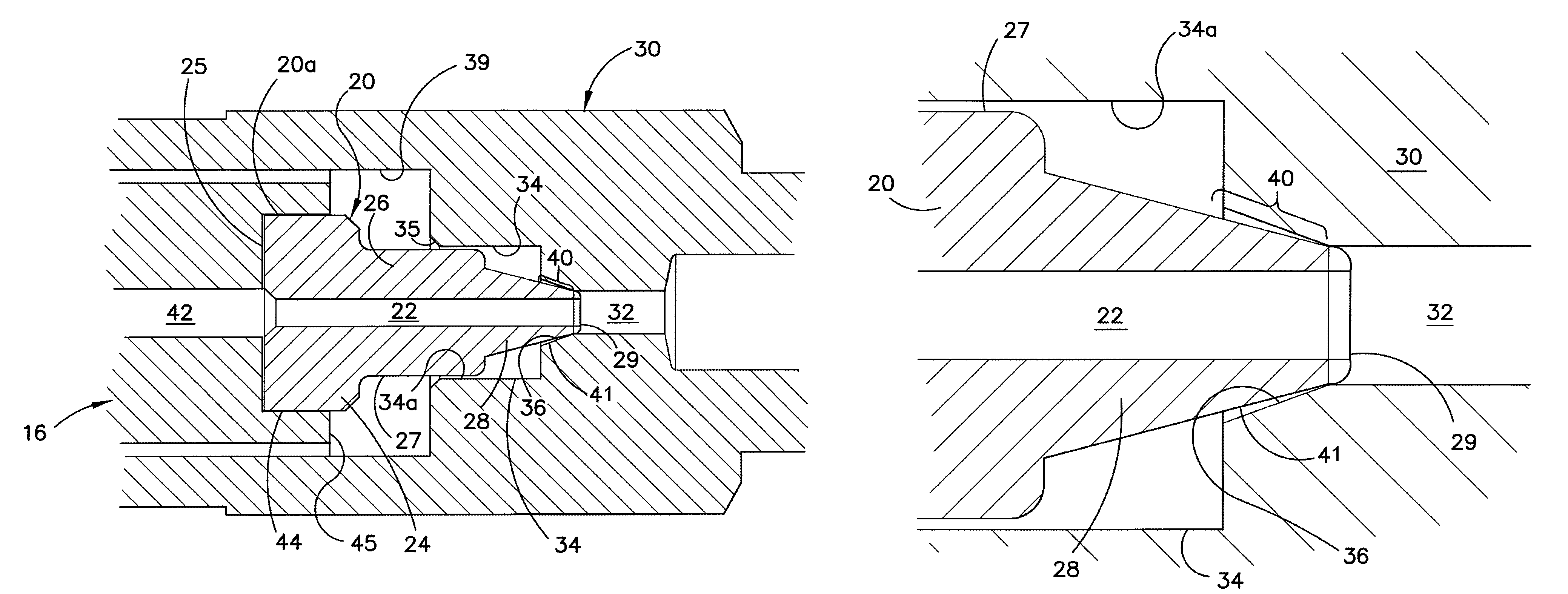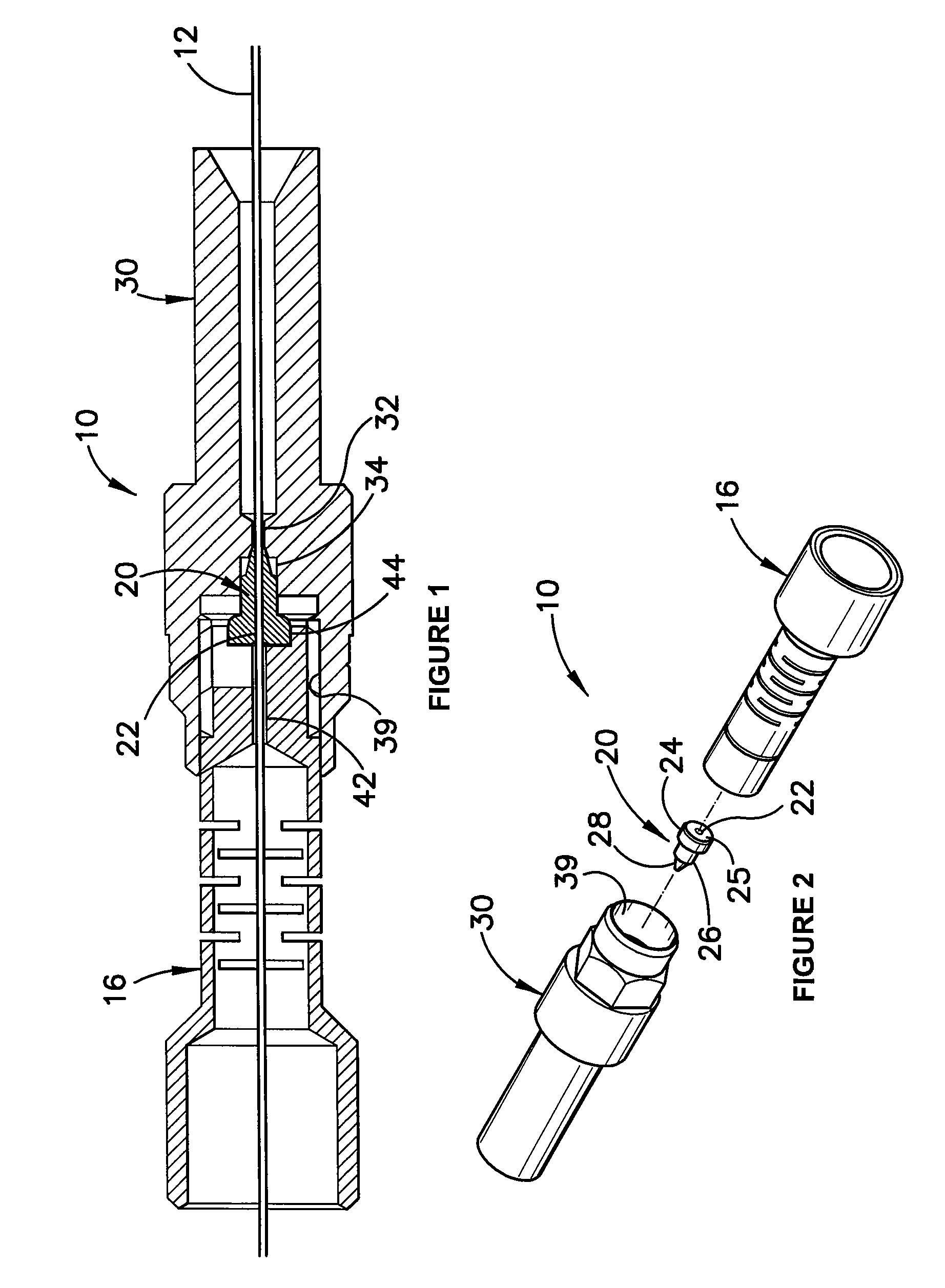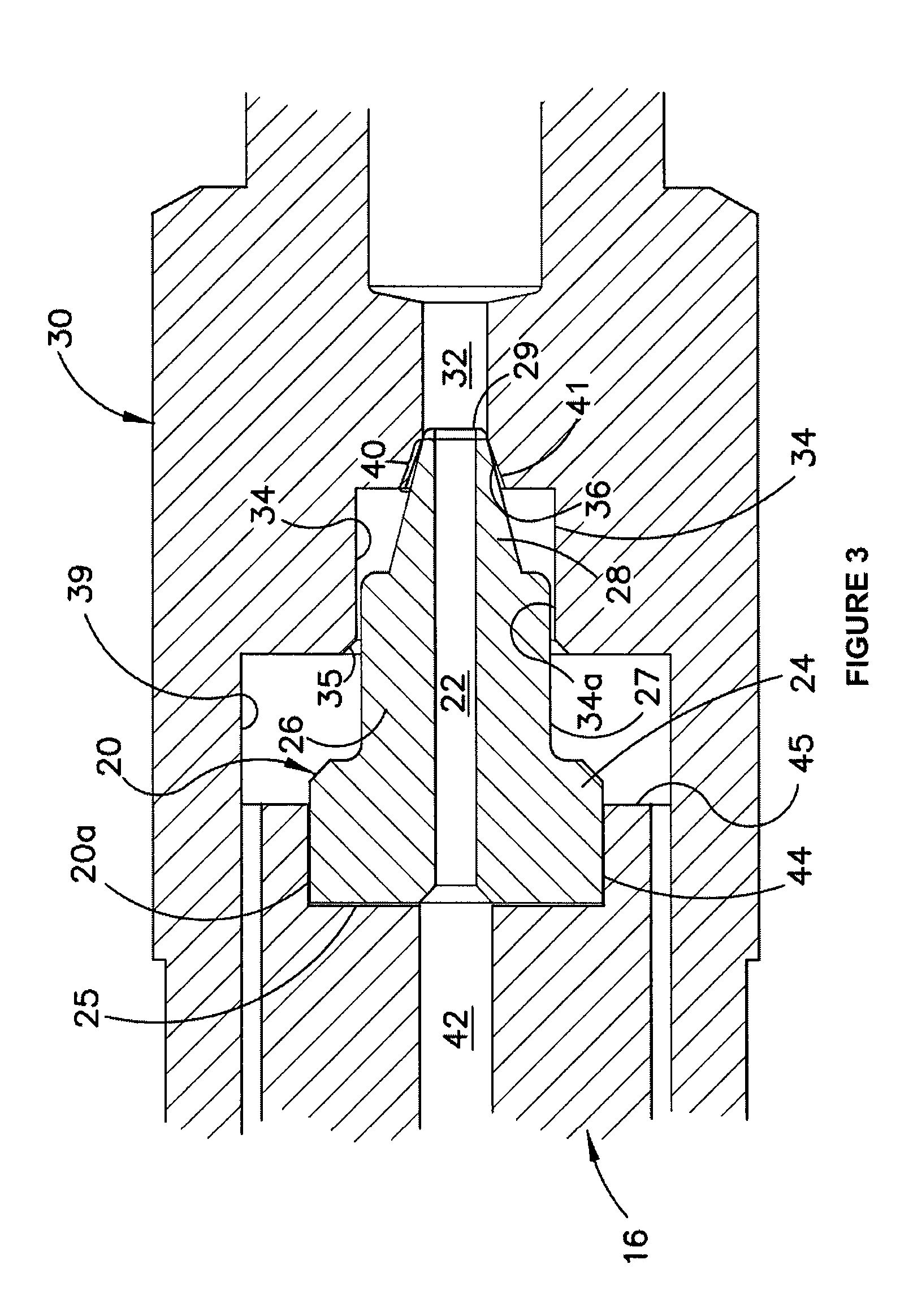Ferrule for making fingertight column connections in gas chromatography
a technology of ferrule and gas chromatography, which is applied in the direction of pipe supports, components, pipe elements, etc., can solve the problems of destroying affecting the integrity of chromatographic separation, and unsuitable metal connection systems, etc., and achieves advantageously diminishing the radial thickness
- Summary
- Abstract
- Description
- Claims
- Application Information
AI Technical Summary
Benefits of technology
Problems solved by technology
Method used
Image
Examples
Embodiment Construction
[0030]FIG. 1 illustrated a typical connection assembly 10 at an inlet end of a fused silica column 12. The assembly includes a generally tubular female column connector 30, a complementary male column connector 16, and, centrally seated in respective co-axial counterbores 34, 44, a ferrule 20. Male and female connectors 16, 30 are threadingly engaged at internal interface 39 for relative axial movement by relative finger rotation of the two components.
[0031]Ferrule column connector 30 serves as former for ferrule 20. All three components are preferably formed in stainless steel and all have a central bore 22, 32, 42 to receive a fused silica glass tube 12, which is of the kind commonly employed as a column in gas chromatography. This tube 12 may generally be of outside diameter 0.3 to 1.0 mm and typically has a protective polyimide coating of thickness around 15 micron, although it may be in the range 5 to 100 micron. Other coatings are also known, including silicone and, for specia...
PUM
 Login to View More
Login to View More Abstract
Description
Claims
Application Information
 Login to View More
Login to View More - R&D
- Intellectual Property
- Life Sciences
- Materials
- Tech Scout
- Unparalleled Data Quality
- Higher Quality Content
- 60% Fewer Hallucinations
Browse by: Latest US Patents, China's latest patents, Technical Efficacy Thesaurus, Application Domain, Technology Topic, Popular Technical Reports.
© 2025 PatSnap. All rights reserved.Legal|Privacy policy|Modern Slavery Act Transparency Statement|Sitemap|About US| Contact US: help@patsnap.com



